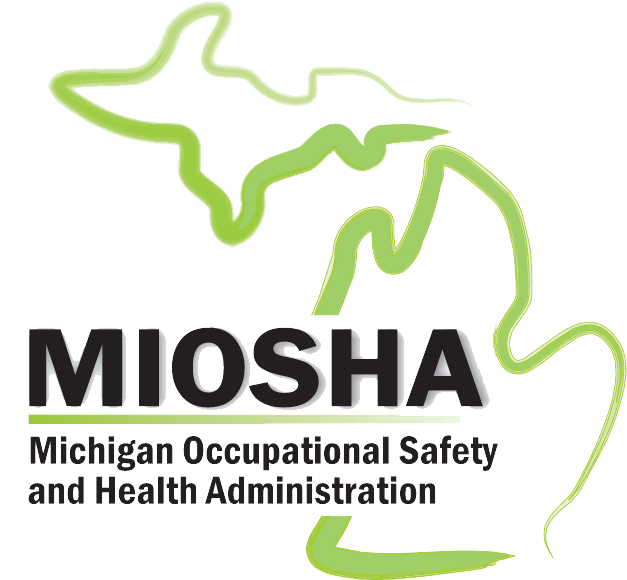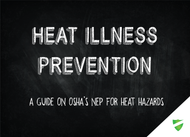
Comprehensive Heat Illness Prevention for Skilled Trades: Safeguarding Our Workforce
In response to the escalating global temperatures and their impact on workplace safety, the Occupational Safety and Health Administration (OSHA) has intensified its focus on preventing heat-related illnesses. This heightened concern is not only a reflection of changing climate conditions but also a proactive measure to ensure the well-being of workers in various sectors, with a particular emphasis on the skilled trades. OSHA's commitment to addressing this issue is exemplified through the development and implementation of the National Emphasis Program (NEP) on heat stress.
The National Emphasis Program (NEP) on Heat Stress
The NEP is OSHA's strategic initiative designed to significantly reduce the risks of heat-related illnesses in the workplace. It marks a critical step forward in occupational health and safety, highlighting the agency's dedication to safeguarding workers from the dangers of excessive heat exposure. The program encompasses a multifaceted approach:
- Enhanced Enforcement: OSHA has increased its efforts to inspect workplaces that are most at risk for heat-related illnesses, ensuring that they comply with safety standards.
- Education and Training: A cornerstone of the NEP is to educate employers and workers about the dangers of heat stress, signs of heat-related illnesses, and preventive measures. This includes guidance on recognizing symptoms, providing first aid, and implementing effective heat illness prevention plans.
- Mandatory Heat Illness Prevention Plans: The NEP stresses the importance of having a structured plan in place to manage heat risks. This includes adequate hydration, scheduled breaks in shaded or air-conditioned areas, acclimatization protocols for new or returning workers, and emergency response strategies.
- Collaboration and Communication: Encouraging open lines of communication between workers and management regarding heat stress concerns and promoting a culture of safety.
Through the NEP, OSHA aims not just to enforce compliance but to foster a proactive culture where heat stress prevention is integrated into the daily operations of businesses, particularly those in sectors where workers are most vulnerable to heat exposure. This initiative demonstrates a clear commitment to not only responding to the immediate challenges posed by heat stress but also to anticipating and mitigating future risks in an ever-warming world.
Understanding the Impacts of Heat Stress
Heat stress occurs when the body cannot get rid of excess heat. When this happens, the body's core temperature rises, and the heart rate increases. Without prompt treatment and management, heat stress can lead to serious health conditions, each varying in severity but all potentially life-threatening if not addressed promptly. Recognizing these conditions is the first step in prevention and treatment.
Heat-Related Illnesses and Their Consequences
- Heat Rash: Often the most common issue, heat rash occurs due to sweat not being able to evaporate from the skin. It's uncomfortable and can lead to infections if the skin is damaged.
- Heat Cramps: These are painful muscle spasms that happen during heavy exertion. They result from the loss of body salts and fluids during sweating. Proper hydration and electrolyte balance are crucial for prevention.
- Heat Exhaustion: This condition is a precursor to heatstroke and is a direct result of the body overheating. Symptoms include headache, nausea, dizziness, weakness, irritability, thirst, and heavy sweating. Heat exhaustion can quickly escalate to heatstroke if not treated immediately by moving the person to a cooler place, providing them with water, and removing excess clothing.
- Heat Stroke: The most severe form of heat-related illness, heat stroke occurs when the body's temperature regulation fails. The body's temperature can rise to 106°F or higher within 10 to 15 minutes. Heat stroke is a life-threatening emergency requiring immediate medical attention. Symptoms include confusion, fainting, seizures, very high body temperature, and hot, dry skin or profuse sweating. Prompt action is needed to cool the person down and seek emergency medical treatment.
The Bottom Line
The impact of heat stress on workers can range from minor discomfort to life-threatening conditions. Understanding these potential health implications is crucial for maintaining a safe working environment, especially in industries where exposure to high temperatures is common. By implementing comprehensive heat illness prevention programs, employers can protect their workforce and ensure productivity and well-being in the face of rising temperatures.
Implementing a Comprehensive Heat Illness Prevention Plan
Prompted by this incident, the construction company takes immediate action to protect its workers. They roll out a FREE NEP-compliant heat illness prevention plan provided by MIOSHA, which includes several key components:
- Mandatory Hydration Breaks: Ensuring workers drink water every 15-20 minutes, not just when they feel thirsty, to prevent dehydration.
- Provision of Cooling Vests: Distributing cooling vests to workers, which help maintain body temperature even in hot conditions.
- Setup of Shaded Rest Areas: Establishing designated shaded areas where workers can take breaks and cool down, reducing the risk of heat-related illnesses.
- Education on Heat Illness Symptoms and First-Aid: Training workers to recognize the signs of heat stress in themselves and their colleagues, including dizziness, headache, and muscle cramps, and providing information on immediate first-aid responses.

Read more about MIOSHA's NEP on Heat Illness Prevention.
Affected Skilled Trades: Who Needs to Pay Attention?
Top Outdoor Trades:
- Construction Workers: Engaged in physically demanding tasks often without shade, making them highly susceptible to heat stress.
- Agricultural Workers: Exposed to the sun for long hours, where hydration and scheduled rest breaks are crucial for safety.
- Landscaping and Groundskeeping Staff: Similar to construction, these roles involve intense labor under direct sunlight.
Top Indoor Trades:
- Manufacturing and Factory Workers: Especially those near machinery or in facilities without adequate cooling systems.
- Culinary Professionals: Kitchens can become excessively hot, posing risks of dehydration and heat exhaustion.
Understanding the Impact of Preparedness - A Possible Real Life Scenario
Imagine a construction site during the peak of summer. The crew is under pressure to meet tight deadlines, working long hours under the scorching sun. Initially, there's no formal heat illness prevention plan in place. The team is exposed to extreme conditions without adequate safeguards, leading to a dangerous and eye-opening incident: a worker collapses from heatstroke.
Without a Prevention Plan: The Risks Unfold
In this scenario, without a prevention plan, workers are highly vulnerable. The affected worker experiences symptoms of heatstroke, which include high body temperature, confusion, and potentially loss of consciousness. This serious condition can escalate quickly if not treated immediately, risking permanent health damage or even death. The incident serves as a stark reminder of what can happen when proper precautions are not taken.
The Transformation: Safety and Morale Boost
The introduction of these measures transforms the work environment. Workers feel safer and more valued, knowing that their health is a priority. The morale of the team improves significantly, as does their productivity, now that they are equipped to deal with the heat safely. This real-life scenario underscores the critical importance of being prepared and the tangible benefits of following OSHA’s guidelines for heat illness prevention.
Partner with an Expert
Our aim is to clarify the complexities surrounding heat stress prevention, making this information accessible and actionable for safety directors and workers alike. By fostering an environment of awareness and preparedness, we can collectively mitigate the risks associated with heat exposure in the workplace.
The introduction of OSHA’s NEP on heat stress underscores the urgency of this issue, compelling us to take decisive action to protect our workforce. By understanding the specific needs of the skilled trades most affected, and by implementing comprehensive heat illness prevention plans, we can ensure the safety and well-being of our workers.
For those in the trenches of these critical industries, the message is clear: the time to act is now. Adopting and enhancing heat illness prevention strategies not only complies with regulatory standards but also, more importantly, saves lives. Let's work together to create a cooler, safer working environment for all. For more information on customizing your heat illness prevention plan or selecting the right safety equipment, reach out to us. Together, we can turn the tide against heat-related workplace hazards.

A Collective Effort for a Safer Summer
Implementing these measures is not just about adhering to guidelines; it's about fostering a culture of safety and care within your organization. Monitoring the heat index and proactively addressing high-heat conditions are integral steps in protecting your workforce from heat-related health risks this summer.
Let's remember, the focus is on preventive action. By being vigilant and prepared, we can safeguard our teams from the dangers of heat stress. Reach out for support in developing a comprehensive heat illness prevention plan tailored to your specific needs. Together, we have the power to create a cooler, safer working environment for everyone.
Join our Save-ty Club for exclusive deals and safety news. Sign up here.
Share this article on social media and tag us for a special discount on your next purchase. Let's spread the word on staying safe this winter!
Stay safe and cool this summer!
Disclaimer: The content provided on this website is for informational purposes only and is not intended to be a substitute for professional medical advice, diagnosis, or treatment. Always seek the advice of your physician or other qualified health provider with any questions you may have regarding a medical condition.
The information on this site should not be construed as establishing any safety standard or as providing directives for compliance with the Occupational Safety and Health Administration (OSHA) or any other health and safety regulatory agencies. Reliance on any information provided by this website is solely at your own risk. We do not accept any responsibility for any loss which may arise from reliance on information contained on this site.


